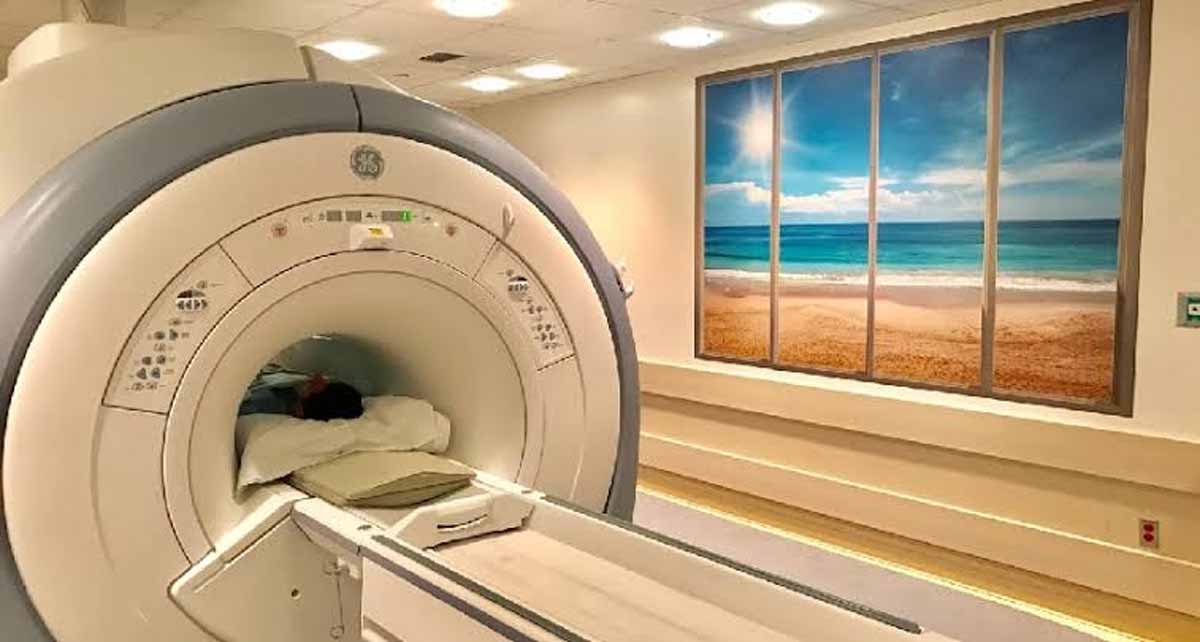- Home
- Editorial
- News
- Practice Guidelines
- Anesthesiology Guidelines
- Cancer Guidelines
- Cardiac Sciences Guidelines
- Critical Care Guidelines
- Dentistry Guidelines
- Dermatology Guidelines
- Diabetes and Endo Guidelines
- Diagnostics Guidelines
- ENT Guidelines
- Featured Practice Guidelines
- Gastroenterology Guidelines
- Geriatrics Guidelines
- Medicine Guidelines
- Nephrology Guidelines
- Neurosciences Guidelines
- Obs and Gynae Guidelines
- Ophthalmology Guidelines
- Orthopaedics Guidelines
- Paediatrics Guidelines
- Psychiatry Guidelines
- Pulmonology Guidelines
- Radiology Guidelines
- Surgery Guidelines
- Urology Guidelines
Low-field MRI scanner has interventional advantages, suggests a recent study

High-performance low-field-strength Magnetic resonance imaging operating at 0.55 tesla is advantageous than 1.5 tesla for invasive Magnetic resonance imaging-guided procedures, especially for patients with implanted metal devices, suggests a recent study published in the RSNA journal Radiology.
Most clinical Magnetic resonance imaging is performed at 1.5 T or 3.0 T, and some have moved to 7.0 T. High field is motivated by higher polarization, increased resolution and increased signal-to-noise ratio (SNR). But this can result in decreased imaging efficiency, image distortion, higher cost and increased specific absorption rate. For this reason, low field strength may offer intrinsic advantages.
Adrienne Campbell-Washburn, from the NIH's National Heart, Lung, and Blood Institute, and colleagues conducted the study to evaluate applications of a high-performance low-field-strength MRI system, specifically MRI-guided cardiovascular catheterizations with metallic devices, diagnostic imaging in high-susceptibility regions, and efficient image acquisition strategies.
For the study, a commercial 1.5-T MRI system was modified to operate at 0.55 T while maintaining high-performance hardware, shielded gradients (45 mT/m; 200 T/m/sec), and advanced imaging methods.
Magnetic resonance imaging was performed between January 2018 and April 2019. T1, T2, and T2 were measured at 0.55 T; relaxivity of exogenous contrast agents was measured, and clinical applications advantageous at the low field were evaluated. There were 83 0.55-T MRI examinations performed in study participants (45 women; mean age, 34 years ± 13).
Key findings include:
- On average, T1 was 32% shorter, T2 was 26% longer, and T2* was 40% longer at 0.55 T compared with 1.5 T.
- Nine metallic interventional devices were found to be intrinsically safe at 0.55 T (<1°C heating) and MRI-guided right heart catheterization was performed in seven study participants with commercial metallic guidewires.
- Compared with 1.5 T, reduced image distortion was shown in the lungs, upper airway, cranial sinuses, and intestines because of improved field homogeneity.
- Oxygen inhalation generated lung signal enhancement of 19% ± 11 (standard deviation) at 0.55 T compared with 7.6% ± 6.3 at 1.5 T (five participants) because of the increased T1 relaxivity of oxygen (4.7e−4 mmHg−1sec−1).
- Efficient spiral image acquisitions were amenable to low field strength and generated increased signal-to-noise ratio compared with Cartesian acquisitions.
- Representative imaging of the brain, spine, abdomen, and heart generated good image quality with this system.
"The lack of safe metal devices has limited Magnetic resonance imaging guidance of cardiovascular procedures," wrote the authors. "We anticipate that low-field strength MRI will enable MRI-guided procedures that use a subset of devices from the traditional catheterization environment."
"By using a high-performance low field strength Magnetic resonance imaging system, there are opportunities for the development of new techniques for invasive MRI-guided procedures, to design acquisition and reconstruction strategies, and for contrast agent development and hardware design," the researchers concluded. "This technology warrants further investigation in the context of clinical MRI."
To read the study in detail follow the link: https://doi.org/10.1148/radiol.2019190452

Disclaimer: This site is primarily intended for healthcare professionals. Any content/information on this website does not replace the advice of medical and/or health professionals and should not be construed as medical/diagnostic advice/endorsement or prescription. Use of this site is subject to our terms of use, privacy policy, advertisement policy. © 2020 Minerva Medical Treatment Pvt Ltd